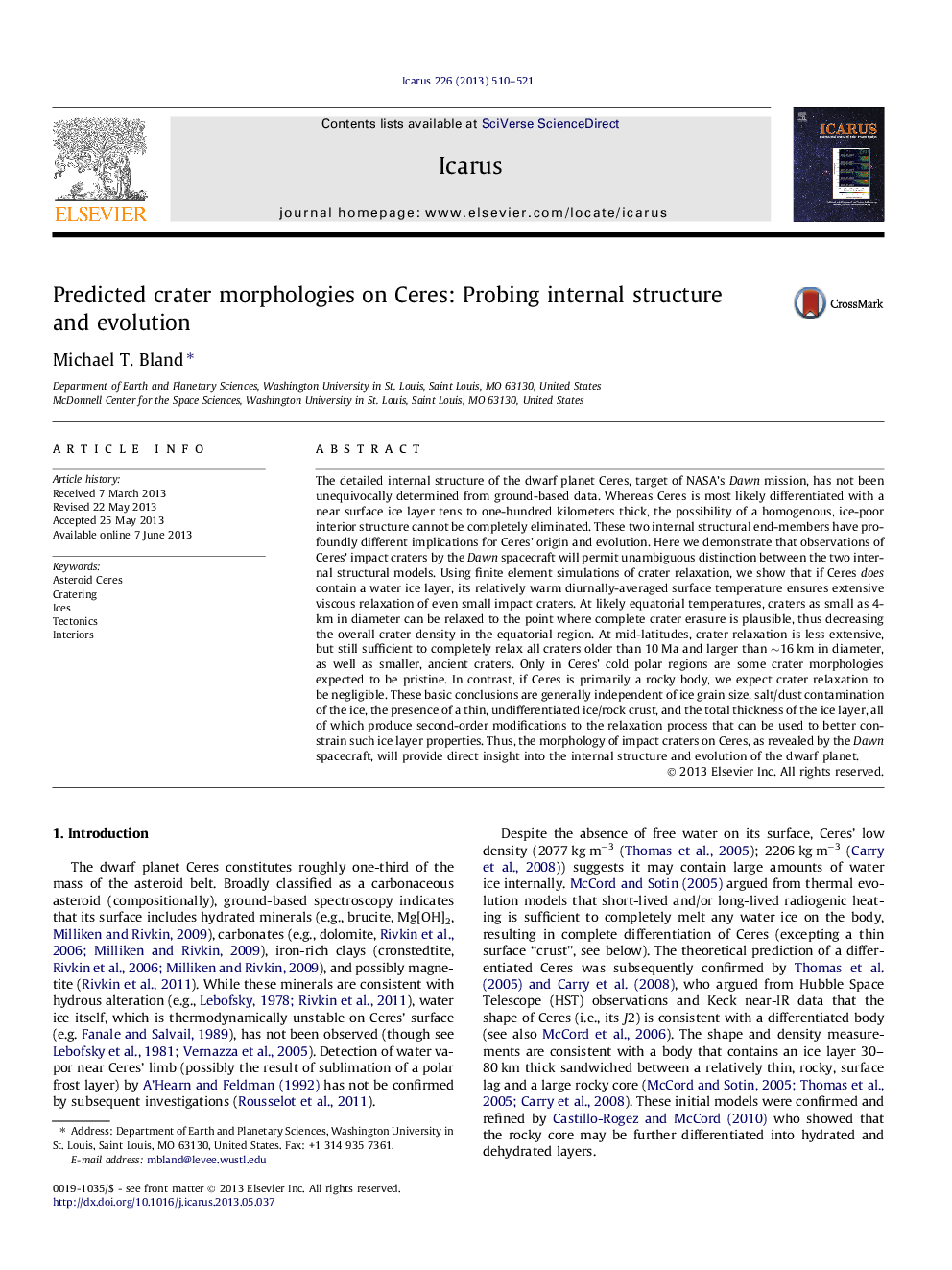| کد مقاله | کد نشریه | سال انتشار | مقاله انگلیسی | نسخه تمام متن |
|---|---|---|---|---|
| 10701320 | 1021128 | 2013 | 12 صفحه PDF | دانلود رایگان |
عنوان انگلیسی مقاله ISI
Predicted crater morphologies on Ceres: Probing internal structure and evolution
ترجمه فارسی عنوان
مورفولوژی دهانه پیش بینی شده در سرس: بررسی ساختار داخلی و تکامل
دانلود مقاله + سفارش ترجمه
دانلود مقاله ISI انگلیسی
رایگان برای ایرانیان
کلمات کلیدی
موضوعات مرتبط
مهندسی و علوم پایه
علوم زمین و سیارات
علوم فضا و نجوم
چکیده انگلیسی
The detailed internal structure of the dwarf planet Ceres, target of NASA's Dawn mission, has not been unequivocally determined from ground-based data. Whereas Ceres is most likely differentiated with a near surface ice layer tens to one-hundred kilometers thick, the possibility of a homogenous, ice-poor interior structure cannot be completely eliminated. These two internal structural end-members have profoundly different implications for Ceres' origin and evolution. Here we demonstrate that observations of Ceres' impact craters by the Dawn spacecraft will permit unambiguous distinction between the two internal structural models. Using finite element simulations of crater relaxation, we show that if Ceres does contain a water ice layer, its relatively warm diurnally-averaged surface temperature ensures extensive viscous relaxation of even small impact craters. At likely equatorial temperatures, craters as small as 4-km in diameter can be relaxed to the point where complete crater erasure is plausible, thus decreasing the overall crater density in the equatorial region. At mid-latitudes, crater relaxation is less extensive, but still sufficient to completely relax all craters older than 10Â Ma and larger than â¼16Â km in diameter, as well as smaller, ancient craters. Only in Ceres' cold polar regions are some crater morphologies expected to be pristine. In contrast, if Ceres is primarily a rocky body, we expect crater relaxation to be negligible. These basic conclusions are generally independent of ice grain size, salt/dust contamination of the ice, the presence of a thin, undifferentiated ice/rock crust, and the total thickness of the ice layer, all of which produce second-order modifications to the relaxation process that can be used to better constrain such ice layer properties. Thus, the morphology of impact craters on Ceres, as revealed by the Dawn spacecraft, will provide direct insight into the internal structure and evolution of the dwarf planet.
ناشر
Database: Elsevier - ScienceDirect (ساینس دایرکت)
Journal: Icarus - Volume 226, Issue 1, SeptemberâOctober 2013, Pages 510-521
Journal: Icarus - Volume 226, Issue 1, SeptemberâOctober 2013, Pages 510-521
نویسندگان
Michael T. Bland,
